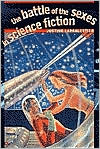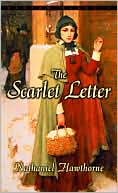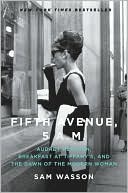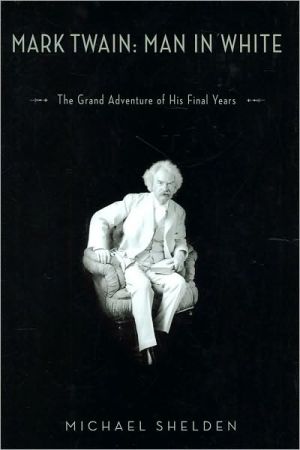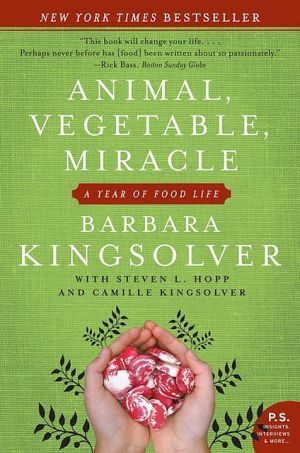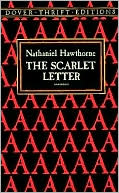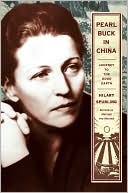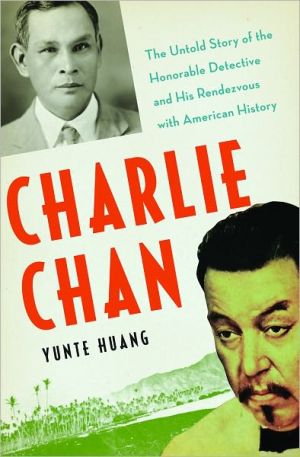The Battle of the Sexes in Science Fiction
The Battle of the Sexes in Science Fiction is a lively account of the role of women and feminism in the development of American science fiction during its formative years, the mid-20th century. Beginning in 1926, with the publication of the first issue of Amazing Stories, Justine Larbalestier examines science fiction's engagement with questions of femininity, masculinity, sex and sexuality. She traces the debates over the place of women and feminism in science fiction as it emerged in...
Search in google:
How women and feminism helped to shape science fiction in America.Publishers WeeklyIn Australian academic Larbalestier's first book, a critical study of American SF's formative years, 1926 to 1973, some gobbets of original and entertaining insight glitter through the viscous prose, but glimpsing them requires slogging through thickets of abstractions bristling with parenthetical documentation, feminist jargon and such unhappily strident images as "white heterosexual male insecurity" in the face of women "as walking sex organs." Inspired by a Joanna Russ article on this theme, the author buttresses her thesis, that male SF writers saw keeping women subservient as the only solution to eternal male-female conflict, by examining many more texts than Russ did, from out-of-print magazines and fanzines to correspondence. Larbalestier also explores semiotics, American studies and histories of sexuality, especially trying to connect battle-of-the-sexes texts with later, overtly feminist SF texts. She sees the James Tiptree Jr. (aka Alice Raccoona Sheldon) Award, which celebrates feminism, as a continuing battleground where sexual warfare is "reworked and transformed." Despite amusing jacket art, some period illustrations and a formidable scholarly apparatus, including a 26-page bibliography, this dense study needs far more than its sporadic dashes of the playfulness with which the Tiptree Award - occasionally given in the form of a typewriter cast in milk chocolate - attempts to leaven a sometimes sententious genre. (June) FYI: This title is part of Wesleyan's recently launched early Classics of Science Fiction series. Copyright 2002 Cahners Business Information.
THE BATTLE OF THE SEXES IN SCIENCE FICTION\ \ By JUSTINE LARBALESTIER\ \ Wesleyan University Press\ \ Copyright © 2002 Justine Larbalestier.\ All rights reserved.\ ISBN: 0-8195-6527-X\ \ \ FAITHFUL TO THEE, TERRA, IN OUR FASHION\ Stories about Science Fiction, Fandom, and Community\ 1926: Gernsback and Amazing Stories\ If Hugo Gernsback had stayed home, everything would have been different. (Knight 1977: 1)\ Science fiction as a community, and certainly science fiction as a publishing category, begins in the United States in 1926 with the first English-language science fiction magazine, Amazing Stories. Scholar Frank Cioffi argues for Amazing's importance: "Starting with Hugo Gernsback's publication of Amazing Stories in 1926, the science fiction pulps gradually assumed a position of importance in the pulp fiction market.... What before had been isolated stories, curios, or, more often, original ways of approaching fairly traditional literary endeavors, became in the thirties a self-conscious and discrete genre" (Cioffi 1982: 6).\ Samuel R. Delany also argues strongly for the 1920s and 1930s as the beginning of the science fiction field, as opposed to much longer science fiction genealogies that have been proposed (Aldiss 1973; del Rey 1979). However, Delany broadens Cioffi's notion of "genre" to include the practices of reading and writing texts as well as the texts themselves:\ By "science fiction" I don't mean the 19th-century didactic fables that includenot only Victorian utopian writing but also the scientific romances Verne and Wells wrote in response to the 19th-century information explosion. I don't mean the "fayned histories" and "fayned voyages" of the 15th, 16th, and 17th centuries, before bourgeois science separated themselves out from another set of discourses differently organized—discourses primarily concerned with instruction, moral or factual. I mean the first intrusion of the modern 20th-century scientific imagination into the very texture and rhetoric of a pre-existing fictive field in the pulp magazines of the '20s and '30s, which, taking advantage of that fiction's paraliterary status, developed a new way of reading language—a new way of writing it to take advantage of this new way of reading, i.e., a practice of writing, a discourse. (Delany 1984: 165)\ This practice of reading and writing, this discourse, begins to be articulated in the editorials and letter columns, as well as the stories, of Amazing Stories, Air Wonder Stories, and Science Wonder Stories in the 1920s, and in what the Fancyclopedia refers to as the "big three" of the 1930s: Amazing Stories, Wonder Stories, and Astounding Science Fiction (Speer 1944: 7). In the 1930s this discourse of science fiction flows into fanzines and conventions, and random generally. In fact, one effect of emphasizing the importance of 1926 and Amazing as the site of the emergence of the new discourse of science fiction is to make random a part of the emerging field of science fiction. This is what many histories of the field do not do. For example, Brian Aldiss and David Wingrove, in Trillion Year Spree: The History of Science Fiction, are explicit about writing a history of written texts—"[O]ur concern is to present SF as a literature, not as social activity" (Aldiss and Wingrove 1988: 346). My concern, however, is to present science fiction as a "social activity," or rather a series of social activities.\ Amazing Stories was published and edited by Hugo Gernsback. For many members of the early science fiction community, Gernsback was the inventor of science fiction; Sam Moskowitz has called him "the Father of Science Fiction" (Moskowitz [1963] 1974: 225-42). The centrality of Hugo Gernsback is reflected in the amateur or fan awards for science fiction, which are given in his honor. Officially they are called the Science Fiction Achievement Awards, but they are universally known as the Hugos. Awarded every year since 1955 at the World Science Fiction Convention (WorldCon), they are the oldest and best-known science fiction awards (Clute and Nicholls 1993: 595-600).\ Gernsback's science fiction magazine publishing and editing career lasted from 1926 until 1953. During that period Amazing was not the only professional sf magazine (prozine) that Gernsback published. Gernsback was, in fact, Amazing's editor for only three years, losing control of it in 1929. But he went on to found other science fiction magazines, including Science Wonder Stories Quarterly, Scientific Detective Monthly, Air Wonder Stories, and Science Wonder Stories; the last two were amalgamated in 1930 to form Wonder Stories. Gernsback remained in control of Wonder Stories until 1936. His publishing endeavors after that date had far less influence on the field, and throughout the 1920s and 1930s he delegated the editorial work on these magazines to T. O'Conor Sloane, C. A. Brandt, and Wilbur C. Whitehead (Clute and Nicholls 1993: 490-91; Tymn and Ashley 1985: 14-57). This means that Gernsback did not necessarily write all or even the majority of the editorial comments during the periods in which he was the publisher and editor of such magazines as Amazing Stories and Wonder Stories. However, such is the mythic force of Gernsback, the founding father, that in the majority of the work I have read on this period he is spoken of as though he wrote every word of editorial comment in the magazines he published. "Gernsback" has come to operate as synonymous with the magazines he founded, whether he was actively contributing to them or not. I will continue this practice, allowing "Gernsback" to stand for the house editorial voice.\ Amazing Stories and the other early science fiction magazines did not come out of nowhere. There had been a long publishing history in the United States of general fiction magazines as well as science, technical, and mechanical magazines that had published what Gernsback refers to as "scientifiction." Gernsback opens his first editorial for Amazing by referring to the overwhelming number of fiction magazines at the time: "Another fiction magazine!" (Gernsback 1926a: 3) (see figure 3).\ The pulps—as many of these magazines were called because of the poor quality of their paper—were very popular. There were, among others, western, detective, crime, occult, sex, true confessions, as well as boys' and girls' adventure pulps (Ashley 1974; Tymn and Ashley 1985; Clute and Nicholls 1993). Gernsback makes several claims for his new magazine in this first editorial. He explicitly distinguishes the magazine from other magazines, which he refers to as the "usual fiction magazine, the love story and the sex-appeal type of magazine, the adventure type and so on." His magazine is not "usual" but "different" or "new." The word "new" appears seven times in the editorial, along with phrases such as "entirely different," "never been done before in this country," "a pioneer in its field," "the new romancers," "blazing a new trail," "the first time." Once the newness of Amazing Stories is established, Gernsback then explains scientifiction. His explanation underlines the indeterminacy and slipperiness of what he is trying to name. He slides among a variety of phrases as he tries to explicate just what scientifiction is and what this new magazine will be concerned with. The limits of the discourse are not yet overdetermined; they are, in fact, being shaped as he writes. "Scientifiction," he states, consists of "the Jules Verne, H. G. Wells type of story," "a charming romance intermingled with scientific fact and prophetic vision," "clever romance [with] a scientific thread," "amazing romances," "scientifiction stories," "stories of this kind," "amazing tales," "science stories," "this sort of literature," and "stories of this kind." Scientifiction, it seems, can be located in a body of preexisting texts by writers such as Poe, Verne, and Wells. Poe, Gernsback claims, "may well be called the father of `scientifiction,'" though his choice of modality here ("may well be called") undermines his claim.\ After providing his scientifiction with a lineage, Gernsback then points to the shaping force of modernity: "[W]e live in an entirely new world. Two hundred years ago, stories of this kind were not possible." This new world, according to Gernsback, has been made possible by science. Treating the two words as synonyms, Gernsback states that "science and progress" are directly responsible for "stories of this kind" because "[i]t is in these situations that the new romancers find their great inspiration." Gernsback's next claim is a critical one to the discourse of science fiction as it would develop in the next few decades. This "sort of literature," he says, is not only entertaining but also "instructive," "supplying knowledge that we might not otherwise obtain ... in a very palatable form." (I examine this idea of science as being good for us, and science fiction as the ideal way to instruct us in its merits, in more detail in the third section of this chapter, "The Science in Science Fiction.")\ For Gernsback, while the discourse of science and scientific knowledge enables scientifiction, scientifiction in its turn enables scientific change—in the form of prophecy. He cites as proof Verne's prediction of "the present day submarine almost down to the last bolt!" This idea of prophecy and prophets shapes the new field of scientifiction as a quasi-religion of science fiction locked into a magical union with science proper. The knowledge that "these modern writers of scientifiction" impart thus is divinely inspired, and it is passed on to disciples, in the form of the readership of Amazing. Gernsback is well aware of "the great responsibility of this undertaking." Its centrality to his project is underlined in the motto that appears above each editorial: "Extravagant Fiction Today—Cold Fact Tomorrow."\ The editorial ends with a call to its prospective readership to "get your friends to read [the magazine] and then write us what you think of it." Many readers did, and in their letters they took up many of the claims that Gernsback makes for scientifiction in his first editorial. All become part of the shaping of the discourses of science fiction and of fandom.\ Many of the claims of Gernsback's editorial are taken up in subsequent editorial comment. For example, his method of defining scientifiction by pointing to predecessors like Verne and Wells is one he returns to in later editorials. The word "scientifiction" might be new, but its referent, Gernsback wants to say, is not. In an editorial titled "The Lure of Scientifiction" Gernsback declares:\ Scientifiction is not a new thing on this planet. While Edgar Allan Poe probably was one of the first to conceive the idea of a scientific story, there are suspicions that there were other scientifiction authors before him. Perhaps they were not such outstanding figures in literature, and perhaps they did not write what we understand today as scientifiction at all. Leonardo da Vinci (1452-1519), a great genius, while he was not really an author of scientifiction, nevertheless had enough prophetic vision to create a number of machines in his own mind that were only to materialize centuries later. He described a number of machines, seemingly fantastic in those days, which would have done credit to Jules Verne. (Gernsback 1926c: 195)\ However, his claims are tentative: "suspicions" modified with "perhaps" and "probably" and the statement that Da Vinci "was not really an author of scientifiction." This is an unstable genealogy, but one that Gernsback attempts to shore up with his choice of stories and serialized novels in his new magazine. The first issue of Amazing consisted entirely of reprints, including a story each from the three fathers—Jules Verne, H. G. Wells, and Edgar Allan Poe—invoked by Gernsback in the first editorial.\ While Gernsback maintained that scientifiction was "not a new thing on this planet" (Gernsback 1926c: 195) and that it had its antecedents in Poe, Verne, and Wells, the newness of it was also part of the discourse. As early as 1930 one reader, Hegory Joywater of Brooklyn, New York, writes that "[s]cience fiction is a new endeavor. Until the advent of Mr. Gernsback, it was strongly individualized, resting in such luminaries as Wells, Verne, Poe etc. But Mr. Gernsback knew that imagination was inherent in everyone; that suitable expression could be molded by just a little coaxing or incentive. So from all America he culled the outposts of science fiction writers" (Joywater 1930: 1142-43). Gernsback responds: "It is true that Science Fiction is in its infancy, and that the publishers of this, and our sister magazines, spend hundreds, perhaps thousands of dollars in advertising for Science Fiction writers, advising them, often teaching them the finer points and sometimes the fundamentals of their craft. But to a great extent we are aided by the readers of these magazines, amongst whom are many well-known scientists, and all of whom are above the average in mentality and intelligence" (Gernsback 1930: 1143).\ Sam Moskowitz notes the effect that such pronouncements had on fans: "Hugo Gernsback did something for the science fiction fan that had never been attempted before: he gave him self-respect. He preached that those who followed this sort of reading-matter avidly were not possessed of a queer taste, but actually represented a higher type of intellect" (Moskowitz 1954: 4). According to Malcolm Edwards, in his entry on Gernsback in The Encyclopedia of Science Fiction, Gernsback also "gave the genre a local habitation and a name" (Clute and Nicholls 1993: 491). To be precise, Gersback gave the genre two names: scientifiction and science fiction. In the first few issues of Amazing, Gernsback's editorials refer to the material he would publish as "scientifiction." He says that he nurses a "secret hope that some day it [the word "scientifiction"] might appear in a standard dictionary" (Gernsback 1928d: 5). When he first aired the possibility of a fiction magazine devoted to this kind of fiction in 1923 he planned to call it just that—Scientifiction. In Gernsback's editorial in the first issue of Science Wonder Stories, dated June 1929, however, he refers to "science fiction." Mike Ashley suggests that Gernsback coined "science fiction" in an effort to disassociate himself from his old magazine (Amazing Stories) and thus avoided the term "scientifiction" that he had used before (Tymn and Ashley 1985: 746-47). The two terms "science fiction" and "scientifiction" remained interchangeable for many years, with "science fiction" eventually gaining the ascendancy.\ The place that Gernsback gave the genre was his magazines, Amazing Stories and Wonder Stories. In the pages of Amazing Stories fans begin to discuss their longing for this particular kind of writing, which was unnamed before Amazing. The existence of the magazine allowed them to speak their desire as well as fulfill it. In this way the discourse of science fiction formed around these magazines and their readers and the interactions between the two. Before the existence of Amazing, regular readers had to look for these stories in such popular all-fiction magazines as Argosy and All-Story, in more specialized fiction magazines such as Weird Tales, in the fiction of Gernsback's earlier, primarily nonfiction, technical magazines Radio News and Science and Invention, or in the books of such writers as H. G. Wells and Jules Verne. But while these readers may have found stories they could retrospectively label "scientifiction," until the advent of Amazing Stories, they did not have the discourse that enabled them to talk about these stories.\ The place Gernsback provided grew into the set of complex relations comprising and constituting science fiction communities. Jack Williamson, who began writing and publishing science fiction in the late 1920s, talks about this process:\ My own way into it [science fiction] wasn't opened until 1926, when Hugo Gernsback launched Amazing Stories, the first magazine that was all science fiction.... A friend loaned me a copy of it that fall, but it was the next spring before I wrote for and received a free sample copy of my own. Money was scarce, but Jo [his sister] helped me pay for a subscription. It was a cheaply printed pulp with lurid but wonderful covers, the early issues filled with the reprinted classics of Poe and Verne and Wells and Merritt. Completely infatuated, I began dreaming up and writing my own. (Williamson 1979: 10)\ (Continues...)\ \ \ Excerpted from THE BATTLE OF THE SEXES IN SCIENCE FICTION by JUSTINE LARBALESTIER. Copyright © 2002 by Justine Larbalestier. Excerpted by permission. All rights reserved. No part of this excerpt may be reproduced or reprinted without permission in writing from the publisher.\ \
List of IllustrationsAcknowledgmentsIntroduction11Faithful to Thee, Terra, in Our Fashion152Mama Come Home393Painwise734Fault1045The Women Men Don't See1446I'm Too Big but I Love to Play1807Her Smoke Rose Up Forever203Epilogue228Appendix233Notes241Glossary255Bibliography259Index285
\ Publishers WeeklyIn Australian academic Larbalestier's first book, a critical study of American SF's formative years, 1926 to 1973, some gobbets of original and entertaining insight glitter through the viscous prose, but glimpsing them requires slogging through thickets of abstractions bristling with parenthetical documentation, feminist jargon and such unhappily strident images as "white heterosexual male insecurity" in the face of women "as walking sex organs." Inspired by a Joanna Russ article on this theme, the author buttresses her thesis, that male SF writers saw keeping women subservient as the only solution to eternal male-female conflict, by examining many more texts than Russ did, from out-of-print magazines and fanzines to correspondence. Larbalestier also explores semiotics, American studies and histories of sexuality, especially trying to connect battle-of-the-sexes texts with later, overtly feminist SF texts. She sees the James Tiptree Jr. (aka Alice Raccoona Sheldon) Award, which celebrates feminism, as a continuing battleground where sexual warfare is "reworked and transformed." Despite amusing jacket art, some period illustrations and a formidable scholarly apparatus, including a 26-page bibliography, this dense study needs far more than its sporadic dashes of the playfulness with which the Tiptree Award - occasionally given in the form of a typewriter cast in milk chocolate - attempts to leaven a sometimes sententious genre. (June) FYI: This title is part of Wesleyan's recently launched early Classics of Science Fiction series. Copyright 2002 Cahners Business Information.\ \ \ \ \ From the Publisher"Larbalestier has assembled a volume that skillfully expands the critical discourse on feminist science fiction. ...Taken as a whole, the anthology serves as an insightful overview of the intermingled development of Western feminism and science fiction since 1927"--Choice\ \
